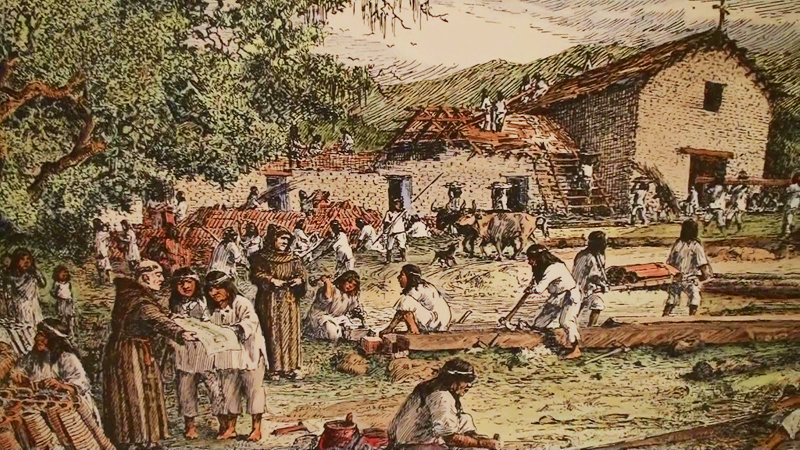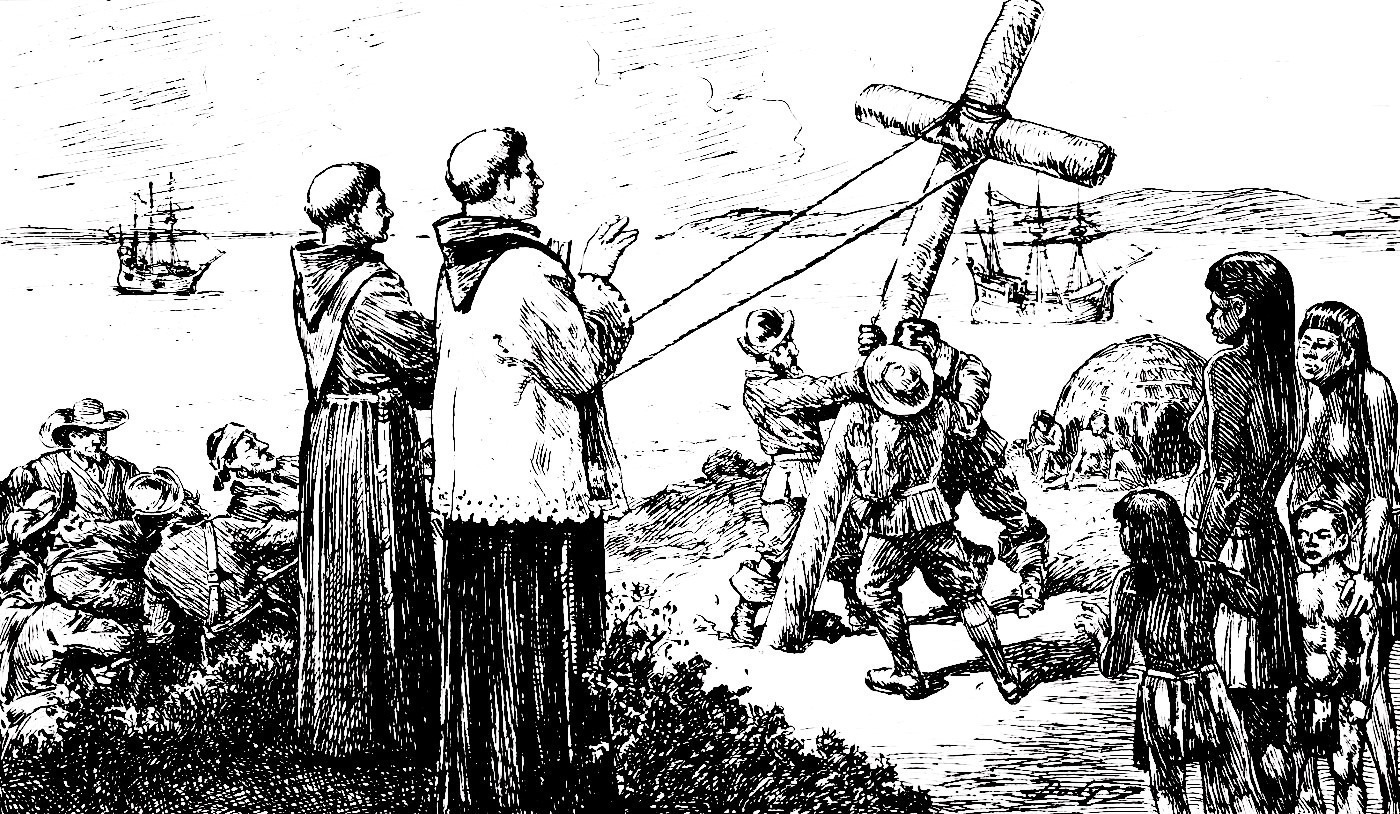
Shadows Over the Golden State: The Enduring Scars of California’s Missions on Native Tribes
California, a land synonymous with sunshine, innovation, and boundless opportunity, holds within its golden hills a history often romanticized but rarely fully understood. Dotting the landscape, from San Diego to Sonoma, stand 21 Spanish missions – picturesque reminders of a bygone era, often framed as the benevolent cradle of the Golden State. Yet, beneath their red-tiled roofs and adobe walls lies a far darker truth: for the Indigenous peoples of California, the mission era was not a beginning, but an apocalypse – a period of unparalleled cultural destruction, demographic collapse, and profound intergenerational trauma, the echoes of which resonate to this day.
Before the arrival of Europeans, California was a mosaic of vibrant and diverse Indigenous cultures. Hundreds of distinct tribes, speaking over 100 languages, thrived in ecological balance, supported by sophisticated knowledge of their lands. The Chumash navigated the Channel Islands in their plank canoes, the Ohlone harvested acorns in the fertile valleys, and the Kumeyaay managed the arid southern landscapes. Their societies were complex, their spiritual beliefs deeply intertwined with nature, and their economies self-sufficient. This was not a "wilderness" waiting to be tamed, but a flourishing civilization.
The Spanish, driven by a trifecta of motivations – "God, Gold, and Glory" – began their sustained colonization efforts in California in 1769. Fearful of Russian encroachment from the north and eager to expand their empire and convert new souls, they dispatched Father Junípero Serra and a contingent of soldiers to establish a chain of missions. Serra, a Franciscan friar, saw himself as a shepherd bringing salvation to "heathen" souls, a perspective that would prove devastatingly myopic.
The mission system was designed as a "reduction" strategy: to gather scattered Indigenous populations into centralized communities where they could be converted to Catholicism, taught Spanish customs, and trained in European agriculture and crafts. From the Spanish perspective, this was an act of benevolence, elevating the "savage" to a state of grace and civilization. From the Native perspective, it was an invasion, a forced removal, and the deliberate dismantling of their way of life.
Initial contact was often characterized by curiosity, trade, and sometimes coercion. Spanish soldiers and friars offered gifts – beads, blankets, tools – and the promise of food and security, especially during periods of drought or inter-tribal conflict. Some Indigenous individuals, intrigued or desperate, came to the missions. But what began as voluntary entry soon became an inescapable trap. Once baptized and designated "neophytes," they were forbidden to leave. "It was never the intention to give them full liberty," wrote Father Mariano Payeras, reflecting the prevailing view that Indigenous people were perpetual children requiring strict paternalistic control.

Life within the missions was a stark contrast to traditional Indigenous existence. Forced labor was central to the mission economy. Men were tasked with farming, ranching, construction, and carpentry, while women processed food, wove textiles, made candles, and performed domestic duties. They worked long hours, often under the supervision of Spanish soldiers or appointed Indigenous overseers, sometimes facing physical punishment for perceived infractions. Traditional hunting, gathering, and fishing, which had sustained them for millennia, were replaced by European agricultural practices that often damaged the local ecosystem and disrupted their ancestral food sources.
Cultural suppression was relentless. Indigenous languages were forbidden, replaced by Spanish. Traditional ceremonies, spiritual practices, and dances were outlawed, deemed pagan and demonic. Native names were replaced with Spanish Christian names. Clothing, housing, and social structures were all forcibly altered to conform to European norms. The very identity of the California tribes was under assault. "They stripped us of our very being," stated a modern tribal elder, capturing the profound sense of loss.
Yet, the most catastrophic impact of the mission system was the introduction of Old World diseases against which Indigenous Californians had no immunity. Smallpox, measles, influenza, and venereal diseases swept through the crowded, unsanitary mission compounds with devastating speed. Population centers that had been vibrant and thriving were decimated. It is estimated that the Indigenous population of California, which stood at around 300,000 prior to European contact, plummeted by as much as 90% by the end of the mission period and subsequent American conquest. This was not merely a decline; it was an ethnocide, a demographic catastrophe of unprecedented scale. As historian Edward Castillo noted, the missions became "death traps."
Despite the overwhelming odds, Indigenous Californians were not passive victims. Resistance manifested in various forms. Many simply fled, attempting to return to their ancestral lands and traditional ways, often pursued by Spanish soldiers who would forcibly bring them back, sometimes in chains. Others engaged in subtle forms of defiance: practicing their ceremonies in secret, sabotaging equipment, or feigning ignorance of Spanish instructions. More overtly, there were numerous revolts, some minor, others significant. The Quechan (Yuma) Revolt of 1781 wiped out two missions and four presidios on the Colorado River, halting Spanish expansion into Arizona for decades. The Chumash Revolt of 1824, sparked by the flogging of a neophyte, saw several missions seized before Spanish military power eventually reasserted control. These acts of resistance, though often brutally suppressed, underscore the unwavering spirit and determination of the tribes to retain their sovereignty and culture.
The mission era officially ended with Mexican independence from Spain in 1821 and the subsequent secularization of the missions in the 1830s. However, this did not usher in an era of liberation for the Indigenous people. Instead, the land previously held by the missions, which had been worked by Native labor, was largely granted to Mexican rancheros, who continued to exploit Indigenous labor under a system akin to peonage. The Gold Rush of 1849 and California’s subsequent admission into the United States brought a new wave of American settlers, who often engaged in further land theft, violence, and even state-sanctioned genocide, pushing the surviving Indigenous populations to the brink of extinction.
Today, the legacy of the missions remains a deeply contested and painful subject. For some, particularly within the Catholic Church, figures like Junípero Serra are revered as pioneers and evangelists who brought Christianity and civilization to a "barbaric" land. Serra’s canonization as a saint by Pope Francis in 2015 ignited fierce protests from Indigenous communities and their allies, who view him not as a saint but as a symbol of oppression, forced assimilation, and the destruction of their heritage.
For the descendants of the mission neophytes, the missions represent a profound rupture – a period of immense suffering, loss of language, culture, and life. The trauma of the mission experience has been passed down through generations, manifesting in ongoing struggles with poverty, discrimination, and the fight for cultural revitalization. Yet, despite the immense challenges, California’s Indigenous tribes have shown remarkable resilience. They are actively working to reclaim their languages, revive their spiritual practices, protect sacred sites, and educate the public about the true history of the missions.
Museums and historical societies are increasingly re-evaluating the mission narrative, moving beyond romanticized portrayals to incorporate the Indigenous perspective. There is a growing understanding that to truly comprehend California’s past, one must confront the uncomfortable truths of colonization and acknowledge the immense cost paid by its first peoples.
The Spanish missions stand as a powerful, albeit complicated, symbol in California’s landscape. They are monuments not just to a European colonial enterprise, but also to the enduring spirit of the Indigenous peoples who suffered under their shadow. Understanding their full impact – the devastation alongside the architectural beauty, the coercion alongside the conversion – is crucial for building a more honest and just future for the Golden State, a future that honors the voices and experiences of all its inhabitants, especially those who were here first. The shadows over the Golden State are long, but the light of truth and resilience continues to shine through.



